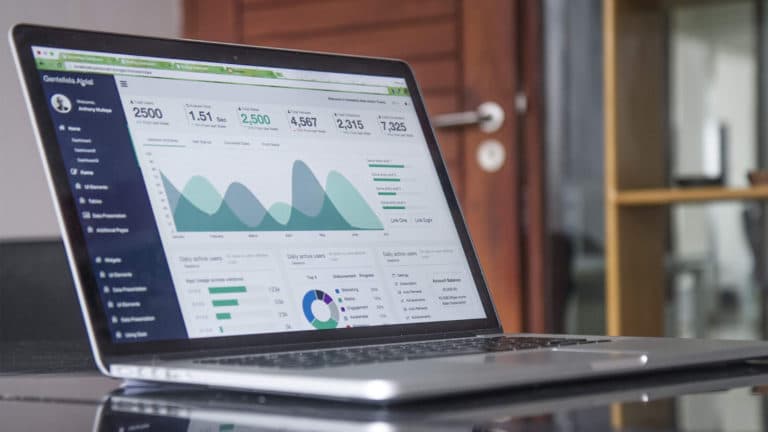Defining your ideal customer profile, or ICP, may be the closest thing to the holy grail of B2B sales, next to identifying your sales process.
It provides characteristics that can be used as a guiding framework by sales & marketing teams. Allowing them to refine their approach and make it more effective. I would assume that almost everyone knows having a clear understanding of who you are selling to is vital, but once you have your ICP, how is it applied?
Defining the “perfect user” is only half the battle. The most important part comes after you’ve defined your ICP, how you allow it to influence your approach.
So where do you get started?
Defining Your ICP
Before you start defining your ICP, take a minute to answer a few questions: “What problem are we solving for?” & “Who are we solving it for?”
Then ask: “What problem are my competitors solving for?” & “Who are they solving it for?”
You may realize that the problem you have identified for your company is slightly different than that of your competition’s. Understanding how you solve a problem differently is key to establishing yourself in a market where existing solutions may be in place already.
What if I Solve a Problem for a Lot of People?
Many technology companies plunge into the same pitfall of solving problems for multiple personas. This can lead to tension, inefficient work, and crossed wires across your organization, from sales to product, as everyone may be building their part of the organization with a different persona in mind.
By casting too wide of a net, or trying to boil the ocean, your ICP is diluted out of the gate. Your ability to understand them, their KPIs, their technology stack, and team dynamic is severely limited because you are now targeting multiple personas. This means that your messaging needs to speak to each one of these identified ICPs and while we can come up with unique email campaigns for each one, we only have one product and one website. So immediately our ability to target is lost in our desire to sell to everyone.
So when it feels like everyone can be your ICP, focus on the personas with budget, who seem to adopt technology like yours quickly, and who have a problem that is big enough to warrant spending money to fix it. If you still have a few options, well, then pick the one that leads to the largest deal value.
This doesn’t mean that those other personas are bad to target, it just means that we are going to focus our messaging, approach and product on satisfying this particular ICP needs before addressing the others.
Understand Your Competition
The next step in developing your ideal customer profile is to research the competition and understand where your brand fits in the market.
Start mapping out data on each competitor in your market, such as strengths & weaknesses, pricing model, customers, reviews, employee count, location, etc.
An easy format to compile all this information is in competitive battle cards. Not only will these make a great asset for the sales team in the future, but they make it easy to visualize the competition’s weakest areas that you can sell against. Some great places to begin your search when filling out these battle cards are places like your competition’s case studies to hear what their customers have to say and SEO tools that give you insights into keywords they rank for.
Once you have an idea of where you fit in the competitive landscape, then you can start putting together the image of what your ideal customer looks like.
What Makes Up an Ideal Customer Profile?
An ideal customer profile, or ICP, is a term that has many interpretations in the world of sales and marketing. An ICP is really just a fictional account that would create the greatest mutually beneficial value.
The Quantitative Side of an ICP
One side of your ideal customer profile is the calculated value this customer would bring to your business. They would cost almost nothing to acquire, have a high lifetime value, and very low likelihood of churning.
While all of these vary by industry, three metrics to start with are your Customer Acquisition Cost (CAC), Customer Lifetime Value (CLV), and Churn Rate.
-
Customer Acquisition Cost
This is simply how much it costs to gain a customer. Customer acquisition cost ranges from $7 in the Travel industry to upwards of $395 in the Tech/Software industry.
-
Customer Lifetime Value
Customer lifetime value is the net profit generated from a given customer. According to BDC, as a general rule of thumb, your customer lifetime value should be roughly 2.5-3 times their acquisition cost. For instance, if you profit around $100 from a specific customer, it shouldn’t cost you more than $40 to acquire them.
-
Churn Rate
Lastly, churn is the average rate at which customers unsubscribe or stop doing business with a company. Zuora’s 2019 Subscription Economy Index reports average churn rates across a number of industries, ranging from Business Services on the low end (16.2%) to Media on the high end (37.1%).
Understanding just these three metrics within your business will help hone in your ideal customer profile. However, these are just the numbers…most of the data in your ICP will arise from overlapping goals, challenges and characteristics.
The Qualitative Side of an ICP
There is certainly more room for ambiguity in this stage of defining your ICP. For start-ups and businesses who don’t have a great data pool of customers to analyze, that’s totally okay.
Honing in Your Goals, Challenges, and Characteristics
Fortunately, there’s a less quantitative part to developing your ideal customer profile that revolves around goals, challenges, and characteristics.
What will your product or service help accomplish for your customer? Potential customers will certainly have their own ideas regarding this and you need to be ready to fulfill their objectives.
When you are starting your journey as a new business, you may not even have a sales organization…and that’s fine! As long as someone is in charge of working with your first few customers to understand how they will use your product or service, that’s just as beneficial. This will help you gain a better understanding of your customer’s goals.
Once you understand what your customers are trying to achieve, then you can start identifying challenges that arise from their interaction with your product or solution. What are the blockers that stand in the way of achieving their goals?
Lastly, understanding the characteristics who’s using your product the most will help develop a more targeted approach when going after future customers. Get creative and specific! For example, many entrepreneurs are Enneagram 3, so consider using language and techniques that speak directly to them.
Note attributes such as the number of employees, their geographic location, estimated revenue, what technologies they’re using, who they’re selling to, and other such details.
Pattern overlap is the name of the game here, use this information to guide your future strategy to target this audience.
Leveraging Your ICP
You’ve done the research and developed your ideal customer profile…so what’s next? This work can benefit all areas of your organization, from demand generation, to sales, and all the way to customer success.
The first and foremost thing you should do is ALWAYS continue adapting your ICP. It will never be perfect, so continue refining by listening to your prospects, leads, and customers as yours business grows.
Here’s how your ICP can be leveraged in each stage of a B2B sales funnel.
Top of Funnel Demand Generation & Marketing
Whatever your inbound lead generation looks like at the top of the funnel, an ICP will help you drastically.
Use it to guide your sponsored social media posts to ensure you are targeting the proper audience. Similarly, you can use your ICP as a framework for retargeting or paid advertisements.
Test your initial hypothesis and stick with what you have success with.
ICP for Content Creation
As far as your content strategy goes, having a refined ICP can help you create content that is even more specific toward your target audience.
For example, use the goals, challenges, and characteristics of your ideal customer to create educational content on why they need your solution.
Middle of the Funnel Sales Strategies & Growth Marketing
Sales can use the ICP in a similar way by working with marketing to create content that will help move leads closer to close.
Growth marketing experiments can validate the effectiveness of your ICP by seeing if certain changes in the middle of the funnel have an effect on conversions. And of course, your outbound sales efforts can be cemented into a more effective process, by seeing if the characteristics of those who you’re targeting has correlation with conversions as well.
Bottom of Funnel Sales Closing & Customer Retention Tactics
Are the goals, challenges, and characteristics of customers lining up with your ICP? If they aren’t it might be time to go back to the drawing board. Onboarding specialists or account managers need to absorb everything new customers have to say about your product. How will they be using it and what is their goal?
Your organization needs to be ready to communicate this efficiently. Product tours should be performed in a fashion where the onboarding specialists or account managers are asking the majority of the questions.
Initially, your new customer might not even know what goal they are trying to accomplish with your product. This is why staying in-touch on a daily basis can help guide them to this target.
For customer retention, try using a tool like Postal’s Playbooks to automate the sending of small gifts throughout the lifetime of a subscription, similar to an online drip marketing campaign.
ICPs are an Infinite Work-in-Progress
As your business grows, your ICP will become more effective and refined. The first part is defining it, the second part is leveraging it in the sales funnel, and the last part is to continue improving it. The most important thing to know about the ICP is that it will never be perfect. Even enterprise organizations stumble periodically and need to go back to the drawing board of who they’re targeting.
The main takeaway to bring back to your workspace, if any, is to have some sort of internal process that continues refining your ICP. This will streamline your operations and accelerate your growth.




